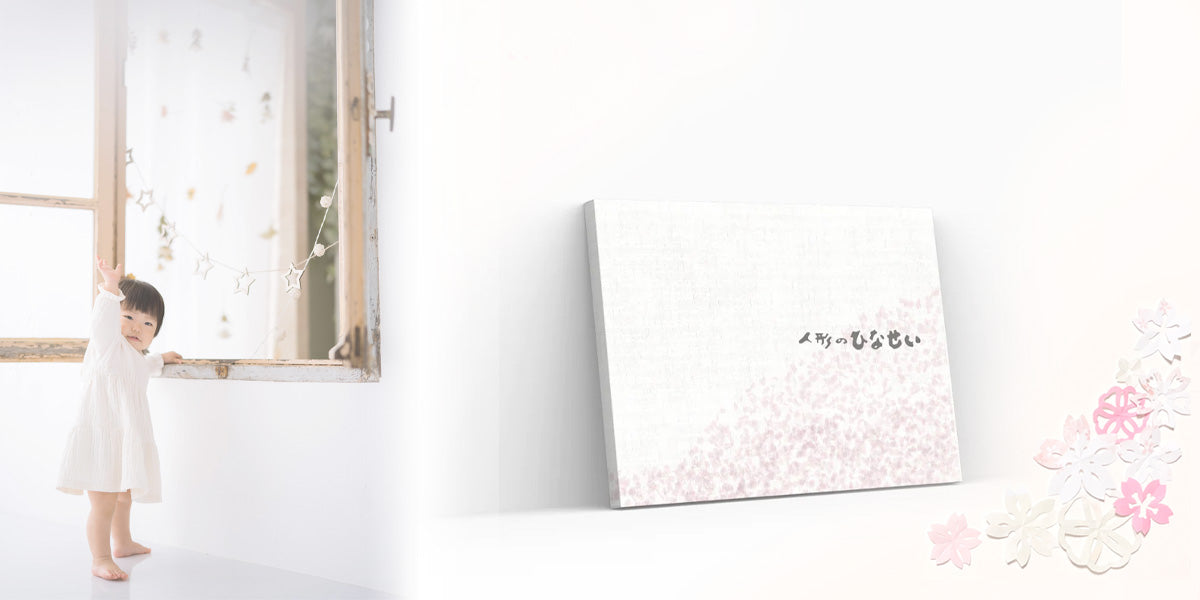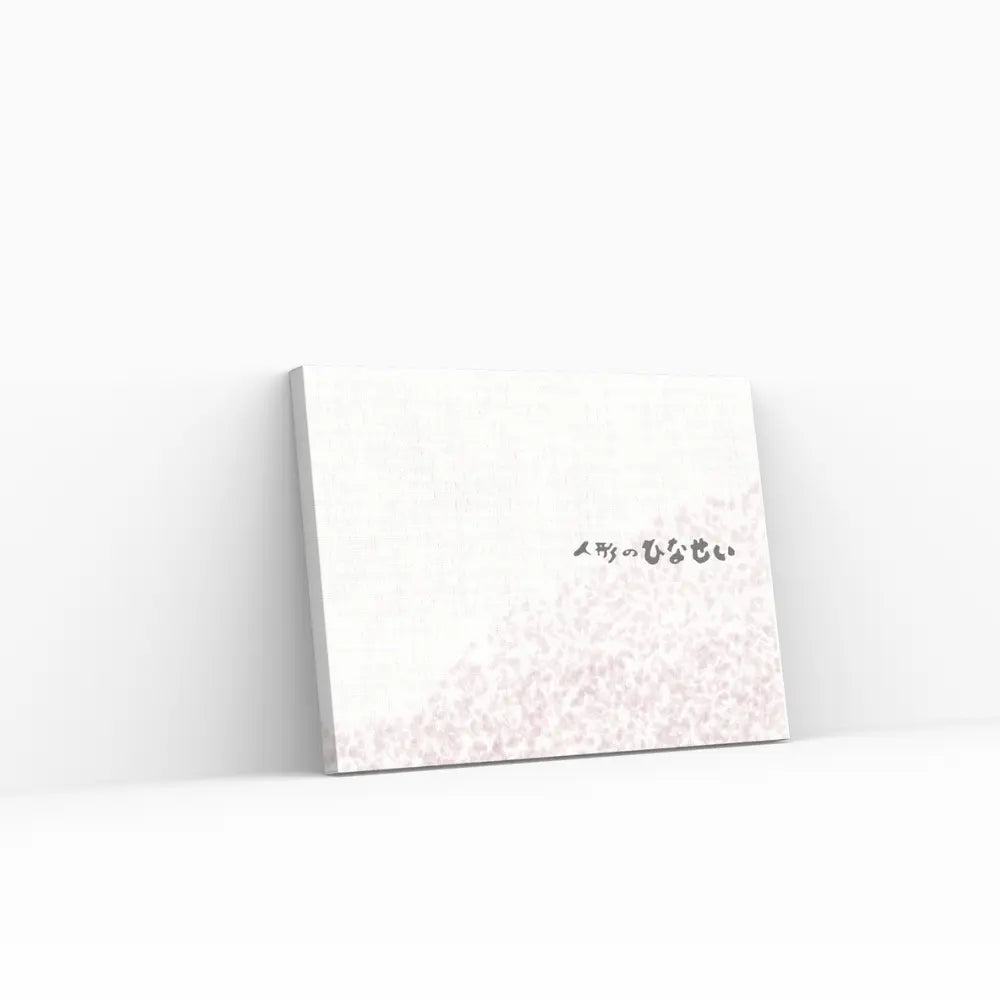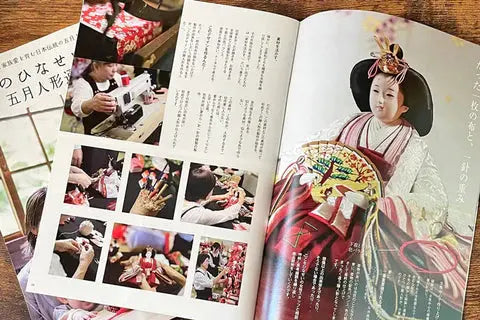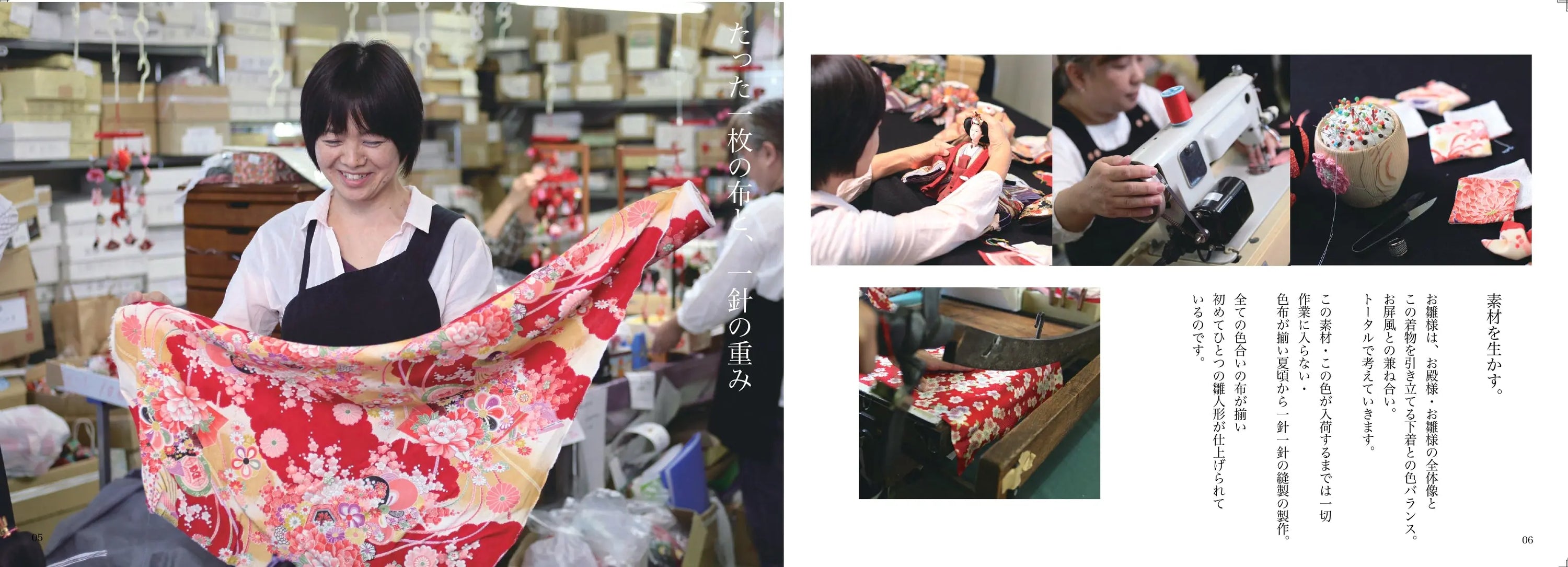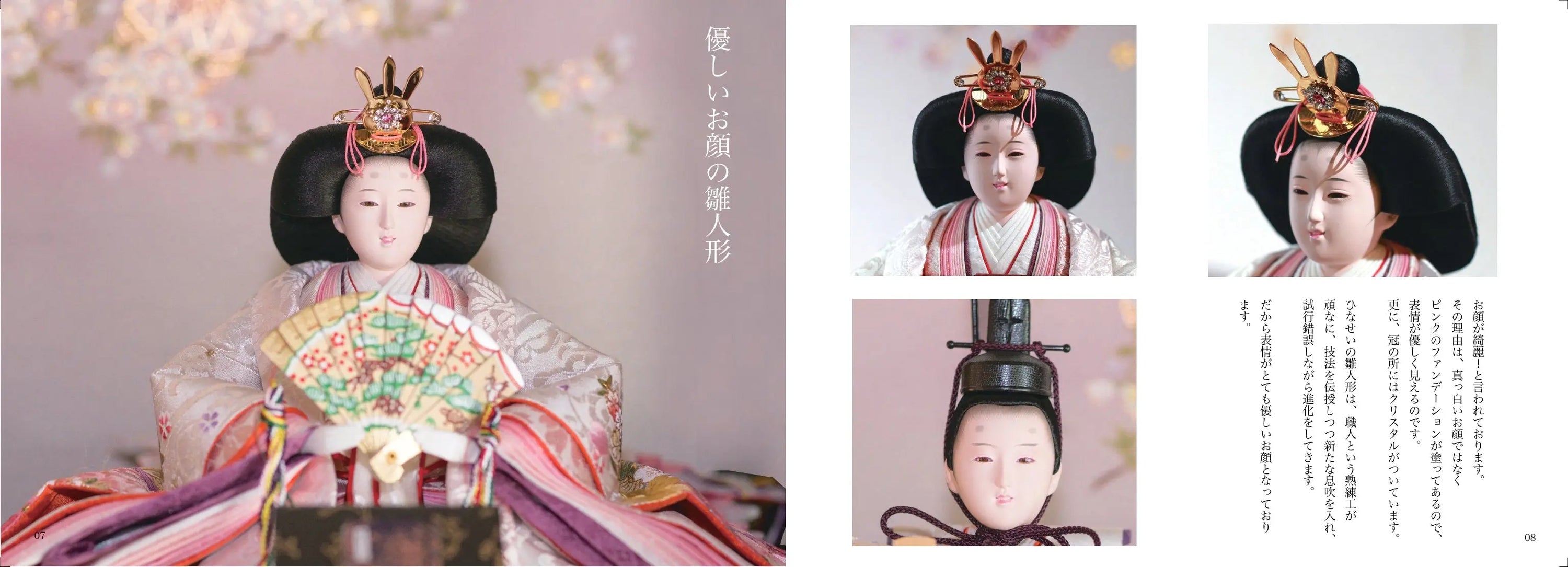Definition and difference between "Ohinasama" and "Hina Doll"
Do you know about the Hina dolls that are displayed during the Girls' Festival?
・Do you say "hina ningyo"?
・Do you say "Ohinasama"?
・Do you say "Ohina-san"?
In fact, there are many different names for these Hina dolls.
Did you know that this name has a special feature?
Here, I would like to provide a unique explanation of this nickname/name.
If you find it interesting, I'd be happy if you could share it.

---- table of contents ----
Click below to jump
10. From Ohinasama to Ohinasan: Love in the names ~ Names filled with respect and affection ~

1. The difference between "Ohinasama" and Hina dolls: Respect born within the family
Hina dolls are traditional Japanese dolls that are the centerpiece of the Doll's Festival, but once they are welcomed into a home and displayed, their name changes.
These dolls, known as "hina dolls" when purchased, become revered figures in the home as "ohinasama."
This difference in name carries a deeper meaning than just a name.
First of all, the name "hina dolls" is often used before purchasing or at official events, and has a prestigious ring to it.
The use of this name reflects Japan's court culture and formalities , and has historical significance.
For example, Hina dolls are part of Japanese history, as they represent the clothing and customs used at the Imperial Court.
On the other hand, the moment they are called "Ohinasama" is when they are welcomed into the family and displayed on Hinamatsuri.
At this point, the doll transcends its role as a mere doll and becomes a symbol of a member of the family .
In Japanese homes, Hina dolls are important to the whole family, and especially to children, they are objects of prayer for their healthy growth.
As you display it year after year, your attachment to it will grow stronger.
2. When to decorate the Hina dolls: Spring arrives with the Girls' Festival
The timing for displaying the Hina dolls is to coincide with March 3rd, which is known as the "Peach Festival."
This marks the change of seasons in Japan and is also an event to celebrate the arrival of spring, with Hina dolls at the heart of the festival.
Decorating the Hina dolls is a very important ritual in preparing the family for the arrival of spring.
Generally, it is best to decorate from early to mid-February .
It is said that it is especially good to decorate them during the periods known as "Risshun" and "Usui," and this is based on an ancient custom.
This is a special time when the whole family works together to decorate the Hina dolls.
The ceremony of displaying the Hina dolls is not just a decoration, but an important event that deepens family bonds.
For children in particular, Hinamatsuri is a precious experience that celebrates their growth.
Decorating the Hina dolls together with your parents and grandparents is an opportunity to feel family unity and love .
3. The Day of Putting Away the Dolls: A Family's Wish Hidden in a Legend
Once Hinamatsuri is over, the next thing to consider is when to put the Hina dolls away .
In Japan, there is a saying that if you don't put away the Hina dolls quickly, your daughter will be late in getting married.
These words contain the wishes and prayers of family members from long ago, and it is a time when the whole family should respond carefully.
So why is the timing of tidying up so important?
The ideal day to clean up is immediately after March 3rd .
This signifies preparation for the next milestone after Hinamatsuri is over.
In particular, in households hoping for marriage or success, it has been believed that putting away the Hina dolls early once they have completed their role in the home will bring good luck.
Tidying up day is also a time to reaffirm family ties .
By having all family members decorate the dolls and put them away in the same way, the important roles within the household are emphasized.
Since Hinamatsuri itself is an event to pray for the growth and happiness of girls, the act of tidying up is also treated like a ritual.
4. Hina dolls become part of the family: From Hina dolls to Ohinasan
Hina dolls are called "Ohinasama" from the moment they are displayed in a home, but as they become more familiar, the name may change to "Ohinasan."
This change reflects the deepening bond between the family and the Hina dolls.
Initially, when purchased, Hina dolls are "hina dolls" and serve the purpose of preserving official ceremonies and traditions.
However, as they are displayed in homes and spend more time with family, they come to be affectionately called "Ohinasama."
As time passes, they become more familiar and are called "Ohina-san," becoming like members of the family.
This change in the way people call things reflects the familiarity that is unique to Japanese people.
The "Ohinasama" is an object of respect, and as the family members gradually come to call it "Ohina-san" with affection, the family members become closer to it.
This change shows that Hina dolls have gone beyond being mere dolls and have become a close presence in the family .

A cute Hina doll to watch over your family as they grow: [Brown glass case, Mikuni Hina]
5. How to decorate Hina dolls: The meaning of the number of tiers and family prayers
When displaying Hina dolls, the number of tiers has a special meaning .
A traditional Hinadan generally has seven tiers, with each tier housing a specific doll or prop.
This way of displaying the dolls is an important ritual that represents the family's prayers and the history and role of the dolls.
The top tier is decorated with the Emperor and Empress dolls.
This symbolizes the central figure in the family and is a symbol of Hinamatsuri.
These dolls represent the stability and happiness of the family, and are especially displayed in hopes of the growth and happiness of girls .
The "Three Court Ladies" are placed on the second tier.
These dolls represent the women who serve at the Imperial Court, and give dignity and formality to the entire Hina doll collection.
From the third tier onwards, there are five musicians, attendants, and servants who pray for the health and prosperity of the family.
These dolls are also important symbols of Japanese history and culture that have been passed down from the past.
6. Choosing a Hina Doll: How to choose a Hina doll that your family will love
When choosing a Hina doll, it is important to choose it with the same feeling as welcoming an important member into your family.
Hina dolls come in a variety of types and designs, and the one you choose can reflect the traditions and values of your family.
So how do you choose the perfect doll?
First of all, when choosing a Hina doll, consider the family ties and feelings .
Traditional Hina dolls are characterized by gorgeous costumes and beautiful faces that symbolize the imperial court, but simple, modern designs are also popular these days.
The key point when choosing is whether it is something that your family will continue to love over the years.
It is a good idea to choose a design that takes into consideration the growth of your family and the fact that it will be passed down to the next generation.
It is also a good idea to consider the different customs and traditions of each region and choose a Hina doll that reflects the characteristics of that region.
In particular, when gifts are given by grandparents, they are chosen to reflect the unique characteristics of that family, as they are important gifts that will be passed down from parent to child and from child to grandchild.

A collection of compact yet gorgeous and pleasing Hina dolls with beautiful faces
7. The Bond Between Hina Dolls and Children: Love Fostered on Hinamatsuri
The bond between the Hina dolls and children deepens through the Hinamatsuri festival.
Hinamatsuri is a traditional Japanese event and an important day to pray for the growth and happiness of girls.
For children in particular, the moment when the Hina dolls become part of the family holds special meaning.
Decorating the Hina dolls is a family ritual .
The time spent assembling the Hinadan with parents and grandparents and carefully arranging the Hina dolls is a moment that deepens the love between family members.
Through this event, children learn about Japanese traditions and culture while also strengthening ties with their families.
Especially for young children, the Hina dolls are not just decorations but like guardians .
Furthermore, Hinamatsuri is a valuable opportunity for children to experience Japanese seasons and culture .
Celebrating Hinamatsuri with family while feeling the arrival of spring allows people to appreciate the changing seasons and foster gratitude for nature and culture.
Furthermore, the time spent with the Hina dolls will become a precious memory for growing children, helping them to understand the meaning and joy of Hinamatsuri.
8. How long should you display the Hina dolls? Customs and how to put them away
The timing of displaying the Hina dolls is of course important, but how long they are displayed is equally important.
In Japan, there is a tradition that the dolls should be put away as soon as possible after Hinamatsuri is over. The reason for this is that an old saying has taken root that if the dolls are not put away quickly, the daughter will be late in getting married.
This legend strongly reflects the family's wishes for the growth and marriage of girls in particular.
After the Hinamatsuri festival is over, the dolls are quickly put away to bring good luck and to pray for future happiness.
However, in modern times, fewer and fewer households strictly follow this tradition, and people are becoming more flexible in tidying up to suit each family's lifestyle.
Generally, it is considered best to put away the Hina dolls within a few days of March 3rd, or at the latest within a week.
However, depending on the region and household, the decorations may be left up for a little longer .
For example, some families keep their decorations up until the beginning of spring, while others take them down a little later to accommodate their busy schedules.
The key is to get it properly tidy before your family moves into the next season.
Also, when putting the dolls away, it is important to take good care of them with gratitude.
Keeping the Hina dolls, which contain the family's wishes, beautiful so that they can be welcomed again next year is one of the traditional Japanese ways of thoughtfulness .
In this way, putting away the Hina dolls after Hinamatsuri is not just a simple tidying up task, but also an important ritual leading up to the next milestone.
9. Caring for Hina Dolls: The secret to keeping your Hina dolls for a long time
Once you buy a Hina doll and put it on display, it's not the end of the story; it needs to be cared for to keep it beautiful for a long time .
Hina dolls are made from delicate materials, and with regular care, they can become treasured possessions that can be passed down through generations of the family.
So, how should you care for your Hina dolls?
First of all, it is important to carefully dust off the dolls after the Hinamatsuri is over.
When displayed for a long period of time, dust tends to accumulate on the delicate costumes and accessories of Hina dolls.
If you store it with dust accumulated, the material will deteriorate easily, so please gently dust it off with a soft cloth or feather duster.
This will help the dolls' beautiful costumes last longer.
Next, when storing Hina dolls, it is important to keep them in a dry place .
Storing your clothes in a humid place can cause mold to grow and damage to your clothes.
In particular, with Japan's humid season approaching, it is important to pay close attention to the storage environment.
If possible, place a desiccant in the storage box for Hina dolls to prevent moisture.
Additionally, make sure to keep the doll's face and hands out of direct sunlight .
Powder used on the face tends to yellow when exposed to sunlight.
Even during the Hinamatsuri period, it is best to display the dolls in a place that is not exposed to direct sunlight.
By working together as a family to care for the dolls, we can protect the dolls and pass them on to the next generation .
With careful care, it will remain a special part of your family and will be loved for a long time.
10. From Ohinasama to Ohinasan: Love and family history embedded in names
Once the Hina dolls are welcomed into the home, the relationship with the family deepens each year they are displayed.
When purchased, the Ohina dolls are respected as "hina dolls," but the process by which they gradually change to the affectionate name "ohina-san" is brimming with the unique emotional atmosphere of a Japanese home .
So why does this name change have such special meaning for the family?
1. From Hina Dolls to "Ohinasama": From Respect to Love When Ohinasama are purchased, they are treated as formal "Hina Dolls" and welcomed into the family.
At this point, it has become a traditional symbol of court culture and formality .
However, as the family displays them and looks after them every time Hinamatsuri is celebrated, they gradually grow to be loved as part of the household, and come to be called "Ohinasama" with respect and affection.
At first, the Hina dolls were very formal, but they eventually came to play the role of guardians of the family .
2. From "Ohinasama" to "Ohinasan": A symbol of affection and familiarity As the Doll's Festival is celebrated year after year, the bond between the family and the Ohinasama deepens , and the dolls come to be affectionately called "Ohinasan."
This change in name reflects the affection and familiarity that families have developed for their Hina dolls over time.
In particular, children come to accept the Hina dolls as protective figures and become more familiar with them.
During this process, the Hina dolls become familiar figures in the home , and with each passing year, they become closer to the family.
3. The family bond and time embodied in the name The name "Ohinasan" is more than just a difference in words; it contains the long history and memories that have been shared with the family.
By decorating the dolls every time Hinamatsuri is celebrated, the whole family comes to respect their existence and their desire for the family's growth and happiness grows stronger.
This uniquely Japanese sensibility is also a symbol of deepening family bonds, and special moments are created within families through the annual Hinamatsuri ritual.
4. The story of Ohina dolls, who live with their families Ohina dolls are important to families, and the bond between them deepens each year when they are displayed.
Hina dolls grow alongside the family and are passed down to the next generation, and are not just decorations, but symbols that live with the family's history .
In Japanese homes, Hina dolls are treated as treasured members of the family and remain special beings who are filled with respect and love.
In this way, Hina dolls will continue to be loved for a long time to come as a symbol of family ties and love .

11. The moving impact that Hina dolls have on families: The meaning of Hinamatsuri
Hina dolls bring a lot of excitement to families during the Hinamatsuri festival.
In particular, celebrating Hinamatsuri together as a family allows you to feel the traditional Japanese values and family bonds .
Hinamatsuri is an event to celebrate the growth of girls, but it is also a time for the whole family to come together and pray for the future .
When displaying the Hina dolls, the whole family works together to arrange the tiered display and treat the dolls with care.
This is an important ritual that involves the cooperation of all family members, and each member performs it with gratitude and prayer .
In addition, the time spent together as a family during Hinamatsuri creates special memories and is an important opportunity to strengthen family ties.
The emotion that Hina dolls bring goes beyond their existence as mere decorative items.
Displayed every year, the Hina dolls watch over the growth and changes of the family , acting as guardians of the home.
For children in particular, memories of the Hina dolls and Hinamatsuri will become precious memories that will be deeply etched in their hearts for years to come.
Hinamatsuri is also an event that heralds the arrival of spring, giving the feeling of a new season beginning .
As families experience the changing of the seasons through Hinamatsuri, they also feel gratitude for nature and are moved by the beauty of each season.
In this way, the emotions brought about by Hinamatsuri and the Hina dolls are something special that combines traditional Japanese culture with family ties.
12. Summary: The family bonds and love that Ohina-san brings
Ohina is a special person in the family.
When purchased, they are treasured as "hina dolls" and displayed in the home.
They are revered as "Ohinasama."
As the years go by, the dolls become more affectionately known as "Ohina-san," and their presence in the family grows stronger, until they truly become a part of the household .
This change in name shows that the Hina dolls are not just decorations, but are loved and close to the family.
The time spent together as a family, deepening bonds while decorating the Hina dolls and making wishes for the future through Hinamatsuri is an irreplaceable experience.
Celebrating Hinamatsuri allows families to reaffirm their appreciation for Japanese traditions and nature , and strengthens bonds through time spent together.
More than just their delicate craftsmanship and beautiful costumes, Hina dolls are special beings that are filled with the love and wishes of their families.
Every year when Hinamatsuri is celebrated, deep emotions and joy of growth are born in the hearts of the whole family, and these feelings will be passed on to the next generation.
P.S. I wrote about the trends in how "Ohinasama" and "Hina dolls" are used in everyday life.
By the way, the word "hina doll" is used before purchasing .
Once you have purchased it and are in possession of it, it becomes a new member of the family and is called "Ohinasama."
You can really feel the warm and relaxed Japanese spirit.

